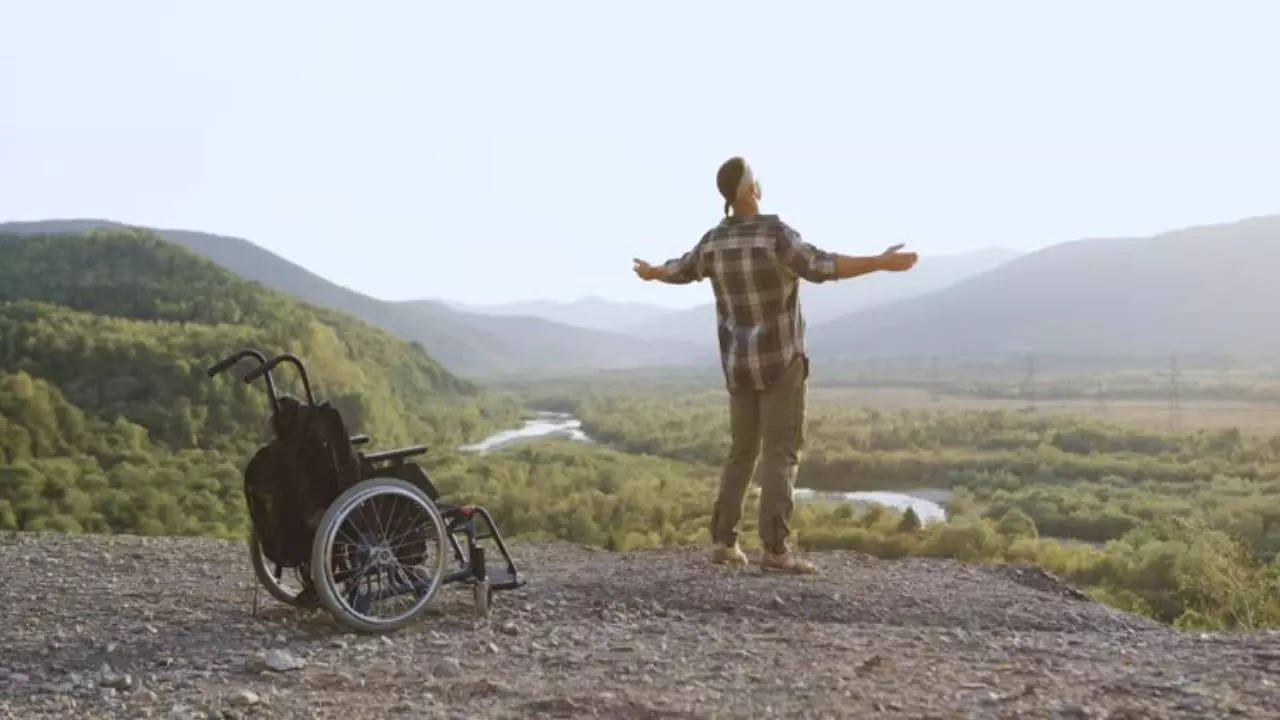
Walking Again After Spinal Cord Injury: This Therapy Makes It Possible! (Image credit: iStock)
Scientists have discovered a new technology that can help people spinal cord Injuries heal more easily. Electrically stimulating a specific area of the brain can help spinal cord injury patients walk, a new study has found. One patient shared how therapy enabled her to overcome her fear of stairs, leading to significant progress in mobility for people with partial spinal cord injury.
The technology, designed for people whose spinal cord injuries have not completely severed the connection between the brain and spinal cord, offers hope for people who have some mobility left in their legs. . The researchers identified the lateral hypothalamus – a brain region associated with arousal, motivation and eating – as important in facilitating recovery from such injuries.
The lead researcher, Swiss neuroscientist Grégoire Courtin of the École Polytechnique Fédérale de Lausanne in Switzerland, explained that a group of neurons in this region play a key role in helping patients regain the ability to walk. Using 3D imaging, the team mapped brain activity in mice with spinal cord injury, creating a detailed “brain-wide atlas” to guide their approach.
role of deep brain stimulation
To enhance signals from the lateral hypothalamus, the team used deep brain stimulation (DBS). This widely used medical procedure involves implanting electrodes in the brain and connecting them to a device in the patient’s chest. This device sends electrical waves to stimulate the brain.
Initial tests on rats and mice showed immediate improvements in their walking ability. The approach was then tested on two human participants, including 54-year-old Wolfgang Jaeger.
How this therapy helped an injured patient walk
Jaeger of Kappel, Switzerland faced imperfection spinal cord injury This limited his mobility. After treatment, Jagger noticed a difference immediately. “Now, when I see a staircase with just a few steps, I know I can handle it on my own,” he said in a video accompanying the study published in Nature Medicine.
The second participant in the trial, a woman with a similar injury, also experienced significant progress. Neurosurgeon Jocelyn Bloch shared that when the device was first activated, the woman said, “I can feel my legs.” He added, “Because of the increased electrical current I feel the urge to walk.”
Both participants underwent months of rehabilitation and strength training, along with using a DBS device. While the woman’s goal was to walk without a walker, Jagger’s goal was to climb stairs independently. Remarkably, both achieved their objectives.
a new sense of freedom
During a recent vacation, Jagger encountered eight stairs leading to the ocean. With the device on, “there was no problem walking up and down the stairs,” he said. “It’s a great feeling when you don’t have to depend on others all the time.” Over time, Jagger saw improvements in his mobility even with the device off, indicating lasting benefits.
Challenges and limitations of this therapy
Although this technique seems promising, it is not suitable for all patients with spinal cord injury. Courtin cautioned that therapy depends on how much signals from the brain still reach the spinal cord. Additionally, the invasive nature of the brain surgery required for DBS may deter some patients.
Looking ahead, researchers are exploring the possibility of combining spinal cord and brain stimulation for better results. This dual approach may provide an even more effective path to recovery. This innovative therapy is an important step forward in the treatment of spinal cord injuries, providing hope for patients seeking to regain independence.
Get the latest news live on Times Now with breaking news and top headlines from around the world.



